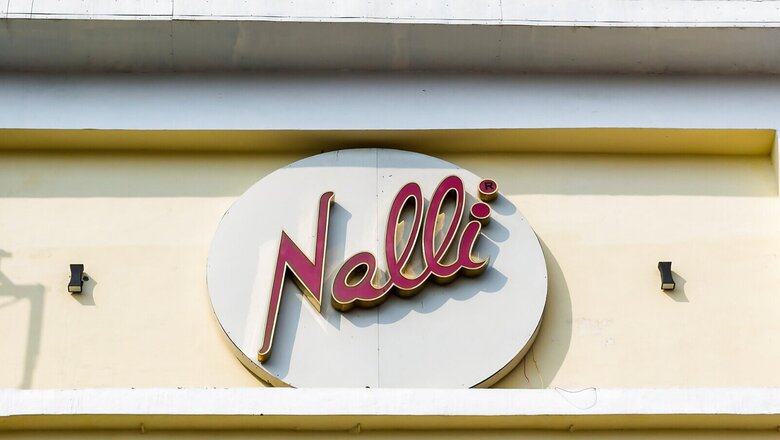
views
Nalli Kuppuswami Chetti is the chair of Nalli Silk Sarees, commonly known as Nalli and Nalli Silks, a family business he inherited in 1958. The family’s history in textiles dates back to a group of weavers in the fifteenth century. Nalli built its unique national brand by emphasizing innovation, customer- centric practices, quality and honesty across its operations. Chetti is also a prominent philanthropist, with interests in the arts, culture and education. He was awarded the Padma Shri by the Indian government in 2003. Interviewed by V.G. Narayanan in Chennai on 28 June 2014.
Interviewer: You have been much more successful than your competitors. What are the reasons for this?
Nalli Kuppuswami Chetti (NC): When I was in the ninth standard, my Tamil teacher was Narayanaswamy Iyer. On the very first day, to improve our vocabulary, he told us to go to the library to read books. It could be in Tamil or English. So I went to the library. But I couldn’t identify what to read. When I explained this to the librarian, he selected two books for me. The first was Mahatma Gandhi’s Satya Sothanai [The Story of My Experiments with Truth] and the second was Ramakrishna Paramahamsa’s Amutha Mozhigal [Thus Speaks Ramdas].
Once I finished reading them, I thought to myself that Mahatma Gandhi had adopted two principles when he was fighting for the nation’s freedom: truth and ahimsa [respect for all living things and avoidance of violence towards others]. I decided that I would adopt truth and honesty as my guiding principles when I joined this trade. And when I started working in Nalli, I realized that this shop was already operating with these principles. My grandfather and father both believed that we should not lie. Even today many people do not believe that it is possible to run a business without lying. But that is how we have been doing business. As a result, our customers have faith in us; if Nalli states something then it must be correct.
Secondly, even during my grandfather’s time, when we did not have many sari varieties, we always labelled our saris. Now, with many varieties—silk, silk-polyester, pure zari (an even thread traditionally made of gold or silver, used especially as a brocade in saris), German zari, half-fine zari, etc.,—we still use computer-printed labels for each of them so customers can understand the reasons for variations in price. They have faith in us and pay the price, but we want them to understand why they are paying a higher price for a specific sari.
The best principle is to be truthful. And on quality, my grandfather would never compromise on that. Now we refer to weight in grams, but in those days we used to refer to it in palam or veesai. My grandfather used to say that the actual weight of the zari in the sari could be in excess, but not fall short of what we were telling our customers. The third was price. We need a nominal profit, so our prices were set in such a way as to deliver a minimum profit. And my grandfather was satisfied with that minimum profit. Then, it was innovation in manufacturing. If there was anything new, my grandfather would come forward to try it first. I want to tell you about one incident. Until 1921, only vegetable dyes were used in India for cotton or silk. Or maybe there were chemical dyes for cotton. Then Ciba introduced chemical dyes for silk. Their managing director from Switzerland, a chemical engineer, and their dealer from Govindappa Naicken Street in Chennai came to Kancheepuram. They went to a big sari shop, P.S. Kandhaswamy Muthu. The owner of the shop directed them to my grandfather. He told them, ‘If you want to try such things, there’s a person called Narayanaswamy who may be able to help you; I’ll introduce you to him.’
They were introduced to my grandfather. In those days, people would not typically disclose details about their dyeing department, though in those days we also did not have that many colour options. For instance, to get crimson, they would add a particular seed to the dye. Nonetheless, they wouldn’t allow anyone to see the dyeing process. The Ciba representatives had developed a new method. They requested us to show them our dyeing system first. And we agreed. We showed the dyeing process for one particular colour. This process began in the morning and it took half a day. The Ciba people waited patiently. They are used to certain climatic conditions and despite that they sat next to the stove throughout to observe the dyeing process. Even we find it difficult to sit there for more than fifteen minutes. We took the silk yarn out, arranged it to dry, and then showed them the colour after it had dried. When they saw the colour that we wanted, they mixed and measured some powder and then completed the dyeing process. Our process took half a day, and their process took half hour. Once they completed it, they asked us to check if the colour matched the colour we wanted. It was acceptable to the person who was responsible for dyeing. Now we had to check if it was acceptable to the weaver. They left the silk to dry in shade and then came back the next day. They asked the weaver to set the dyed yarn on the loom. Usually, the weaver can weave about nine to ten inches in three hours. The Ciba representatives asked the weaver if there was any difference in the yarn. And the weaver confirmed that it was exactly like the yarn from the earlier dyeing process. So both matched and it was over. Everything was okay.
This was the first time that this process was introduced in India, by my grandfather. Then in a few weeks, everyone switched to the new process since it was easier. He was open to trying out new things. It was in his nature. This was in manufacturing.
Interviewer: What about similar issues that you faced in other parts of the business system?
NC: On the marketing side, saris bearing new names are introduced every year during Deepavali. In 1911, we were not the proprietors. We were only weavers. And what we had woven was named ‘Durbar Border’. In 1947, India became independent. To mark the occasion, we designed a sari border that resembled the Indian Tricolour. It was named ‘National Border’. It was very successful. Then with the arrival of sound film [talkies] in 1934, one of the sari borders was called ‘Thyaga Bhoomi’ [Land of Sacrifice] after the famous Tamil film. I came in 1956, and in 1961, they named a sari ‘Paalum Pazhamum Kattam’ [MilkFruit Checks] and ‘Thennilavu’ [Honeymoon] border. There is a thirty-year cycle. The designs that were prevalent thirty years ago are back in vogue now. That’s because this generation is new. The designs that were popular during their mother’s and grandmother’s time may not have been seen by this generation, so they appear new. So the ‘Paalum Pazhamum Kattam’ that was introduced in the 1930s came back in the 1960s. It didn’t return in the 1990s but it has come back now, as before. In this manner, we have been pioneering the process of branding or naming of new designs.

This excerpt from Leadership to Last: How Great Leaders Leave Legacies Behind edited by Geoffrey Jones and Tarun Khanna is published with the permission of Penguin Random House
Read all the Latest Opinions here















Comments
0 comment